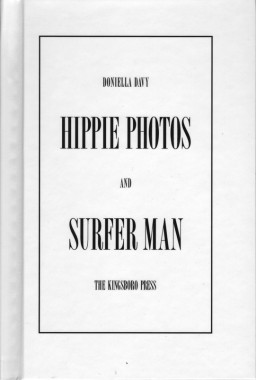
Doniella Davy, Hippie Photos and Surfer Man
Hardcover, 48 pp., digital 4/1, 6.25 x 9.25 inches
Edition of 250
Published by The Kingsboro Press
$15.00 ·
Simply hilarious. Through her voyeuristic lens, photographer Doniella Davy tells a story of 2 “hippies” interacting with each other and how a surfer spends his time at the beach (besides surfing, of course).
Art, Culture, Distribution, Doniella Davy, Photography, The Kingsboro Press
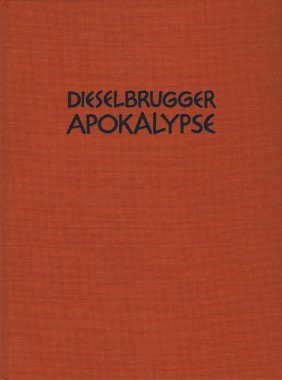
Emanuel Halpern, Dieselbrugger Apokalypse
Hardcover, 80 pp., offset 4/4, 220 x 297 mm
English and German
Edition of 1000
ISBN 978-3-905714-89-0
Published by Nieves
$46.00 ·
When someone as peaceful as Emanuel Halpern (Zurich, 1948) draws an apocalypse, things must be pretty bad with the world. His fifty large-scale coloured pencil drawings telling the story of the destruction of Dieselbrugg confirm this prediction. This is his comic version of Dürrenmatt‘s valley of confusion. Reality, which is usually slouching towards tragedy, can be described only by comic means. Both talented storytellers subscribe to this truism. They give us solid citizens with image and text collages that are almost excessively artistic and hypertrophic. But the images underline the fact that this is the only way that we can tackle and escape from the mess.
In the Dieselbrugger Apokalypse, Halpern manages to move between pilgrimage and the misery of refugees with the sure-footedness of a somnambulist. “You can‘t really be as dozy as that” he seems to be muttering. “Come into my yurt In here you will hear peace bells ringing, you‘ll see bathing towels fluttering. This is Dieselbrugg.”
— Guido Magnaguagno
Art, Distribution, Emanuel Halpern, Guido Magnaguagno, Illustration, Nieves, Paul Knight, Rafael Newman, Zuni Halpern
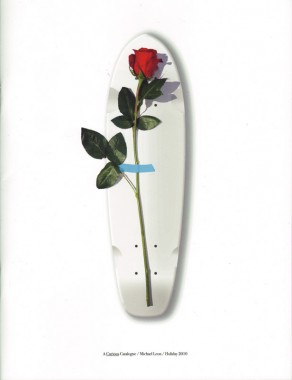
Michael Leon, A Curious Catalogue
Softcover, 28 pp., offset 4/4, 195 x 255 mm
Edition of 1000
ISBN 978-3-905714-92-0
Published by Nieves
$16.00 ·
A Curious Catalogue is a skateboard product catalogue of pencil drawn anti-graphics, spin-art wheels, and slalom gemstones. It was designed to take a romantic and fantastic vision of a skateboard company and make it ‘real’. Michael Leon was inspired by the naïve wonder he experienced as a young skateboarder, which he juxtaposes with an elegant, yet dry, catalogue sales format. The result is a carefree and poetic narrative carried by a range of imagined products.
Michael Leon was raised in late 80s, early 90s skateboard culture. His work lives in a unique place between the worlds of art and art direction. He often uses the language of graphic design to create meaning through sculpture, paintings, videos, and editions. While still in high school, Michael designed his first pro model skateboard for New Deal Skateboards. 19 years later, he continues to design for his skateboard company Stacks, as well as creating artwork and art directing collaborative projects.
Dave Vander Maas, Design, Distribution, Graphics, Michael Leon, New Deal Skateboards, Nieves, Sport, Stacks, Thomas Erber
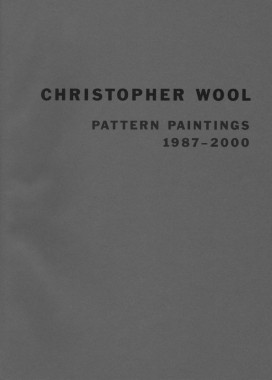
Christopher Wool, Pattern Paintings 1987-2000
Softcover, 48 pp., offset 2/1 duotone, 210 x 297 mm
Edition of 1000
ISBN 978-0-970909-07-7
Published by Luhring Augustine/Skarstedt Gallery
$25.00 ·
Published on the occasion of Christopher Wool’s exhibition at New York’s Skarstedt Gallery, this concise collection of 17 black-and-white pattern paintings made between 1987 and 2000, set alongside 10 installation shots, serves as historic documentation of works that have rarely been shown or published, but which remain perennially influential. Born in Chicago in 1955, Wool came to prominence in New York in the 1980s with his graffiti-like text paintings, which are full of slang, song lyrics and action painting drips. Loved and loathed by critics, Wool has been described by the Village Voice’s Jerry Saltz as, “a very pure version of something dissonant and poignant. His all-or-nothing, caustic-cerebral, ambivalent-belligerent gambit is riveting and even a little thrilling. It’s what makes him one of the more optically alive painters out there.”
Art, Christopher Wool, DAP, Hans Werner Holzwarth, Jerry Saltz, Larry Lamay, Luhring Augustine, Skarstedt Gallery
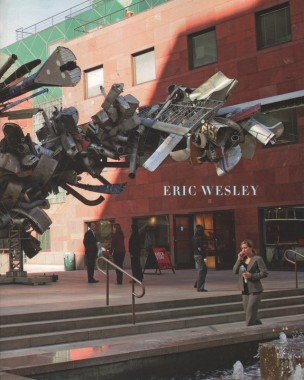
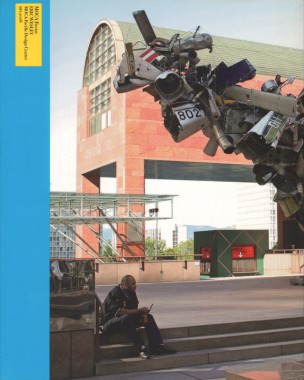
Eric Wesley, Eric Wesley
Softcover, 60 pp., offset 4/4, 8 x 10 inches
Edition of 2000
ISBN 978-0-914357-97-1
Published by MOCA
$25.00 ·
West Coast artist Eric Wesley was born in 1973 in Los Angeles. His work, which can take the form of sculpture, painting, drawing, architectural model or public artwork proposal, often uses decrepit materials and conveys a humorous take on the world and his own identity within it. For the Whitney Biennial, he created scale sets for a faux reality show; his kinetic sculpture Kicking Ass was a mechanized donkey that kicked holes in the gallery wall behind it. This small monograph is the first publication dedicated solely to the artist’s work, and is published on the occasion of his exhibition as part of the MOCA Focus series.
Art, Cornelia Butler, DAP, Elizabeth Hamilton, Eric Wesley, Jane Hyun, Lisa Mark, Michael Worthington, MOCA, Sculpture, Yasmin Khan
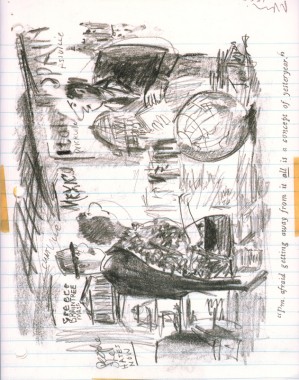
Richard Prince, Jokes & Cartoons
Softcover, 216 pp., offset 4/1, 218 x 280 mm
Edition of 2000
ISBN 978-3-905701-83-8
Published by JRP|Ringier
$35.00 ·
Conceived by the artist, this book gathers together the raw material to his “Joke Paintings” for the first time: unpublished manuscripts, well-known as well as unshown works from his personal collection, cartoons, and jokes. The project comments as much on the perception of his own work through the filter of a devaluated form of humor, as on the popular material appropriated through it.
“Jokes and cartoons are part of any mainstream magazine. Especially magazines like the New Yorker or Playboy. They’re right up there with the editorial and advertisements and table of contents and letters to the editors. They’re part of the layout, part of the “sights” and “gags.” Sometimes they’re political, sometimes they just make fun of everyday life. Once in awhile they drive people to protest and storm foreign embassies and kill people.”
— Richard Prince
Art, Beatrix Ruf, Culture, DAP, Ines Hany, JRP|Ringier, Richard Prince
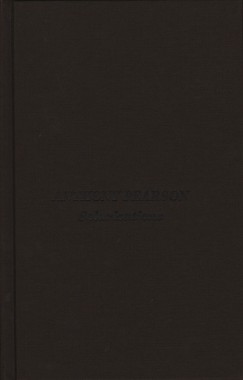
Anthony Pearson, Solarizations
Hardcover, 72 pp., offset 1/1, 6.25 x 9.75 inches
Edition of 1000
ISBN 978-0-9768664-2-9
Published by Midway Contemporary Art
$25.00 ·
An essay by Tim Griffin and an interview between Anthony Pearson and John Rasmussen discuss Pearson’s unusual approach to photography, his solarization and lens flare pieces, and his process. Twenty plates give the reader a clear sense of this body of work.
Pearson’s work over the past few years has been an exploration of perceptual and historical aspects of photography and abstraction. Working in both chemical and electronic processes, Pearson has melded these photographic methods in a highly personal manner to suggest that the concerns of the analog and digital are not as disparate as supposed. His ongoing series of solarized, silver gelatin prints exploit elements of chance and variability through a highly controlled three-part process. Pearson begins by constructing tableaus of foil, spray-paint, and ripped paper through both additive and subtractive methods, alluding to precedents such as the décollage of the Nouveau Realistes. After photographing details of these drawings and constructions, the prints are then solarized in the darkroom during a process by which tonality of the image is inverted to varying degrees through a brief exposure to white light. While the small scale of these photographs could be read as referencing reproductive plates of gestural mid-century paintings, the unique nature of each photograph elaborates a highly personalized language that builds upon historical strains of abstraction.
Abi Chase, Anthony Pearson, David Kordansky Gallery, Distribution, John Rasmussen, Midway Contemporary Art, Shane Campbell Gallery, Tim Griffin
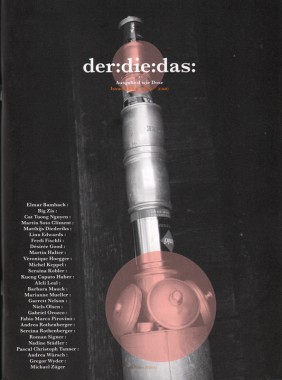
der:die:das:, Issue d like dose (can)
Softcover, 100 pp., offset 4/4, 200 x 270 mm
English and German
Edition of 1000
ISSN 1663-2508
Published by der:die:das:
$22.00 ·
Some words on, and images of, dose (can).
Aleli Leal, Andrea Rothenberger, Andrea Wursch, Art, Barbara Mauck, Big Zis, Cat Tuong Nguyen, Culture, der:die:das:, Desiree Good, Distribution, Elmar Bambach, Fabio Marco Pirovino, Fredi Fischli, Gabriel Orozco, Garrett Nelson, Gregor Wyder, Kueng Caputo Huber, Linn Edwards, Marianne Mueller, Martin Halter, Martin Soto Climent, Matthijs Diederiks, Michael Zuger, Michel Kobler, Nadine Stadler, Niels Olsen, Pascal Christoph Tanner, Photography, Roman Signer, Sereina Rothenberger, Veronique Hoegger
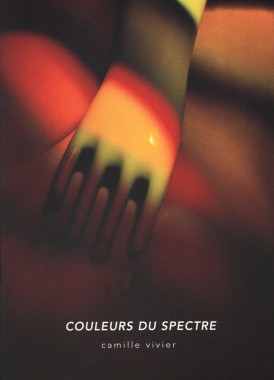
Camille Vivier, Couleurs du Spectre
Softcover, 68 pp., offset 4/4, 8.5 x 11 inches
Edition of 500
ISBN 978-0-9825936-4-6
Published by Seems
$24.00 ·
Couleurs du Spectre, contains a selection of photographs by Camille Vivier taken over the last ten years. They blend together classical pictorial subjects such as still life, nudes, and animals but with a distinct personal eye revealing a shadowy universe. Each photograph is theatrically staged employing props and the artifice of light to play with the formal beauty of the subject, while revealing a certain strangeness among the stillness. Vivier uses literature, cinema, and art history to reinterpret common cultural references and create a personal collection of curios and imagery of fantastic animals and characters. The film sequences are an extension of the photographic process and allow for further exploration of themes and imagery.
Art, Camille Vivier, Distribution, Photography, Seems
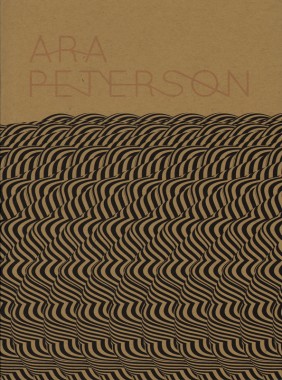
Ara Peterson, Untitled 2004-2010
Softcover, 68 pp., offset 4/4, 6.75 x 9.25 inches
Edition of 500
ISBN 978-0-9825936-5-3
Published by Seems
$25.00 ·
Ara Peterson’s arresting three-dimensional objects fall somewhere between painting, sculpture and architecture. The somewhat outmoded practice of a ‘bas-relief’ comes to mind, but this type of ornamentation doesn’t fully capture the voluptuousness of these structures, which are as much about optical clairvoyance as they are about process. Indeed, each piece results from a series of labor-intensive operations, beginning with the synthesis of wave formations that translate the artist’s initial mental image into a basic form. This is an impressionistic use of algorithms to determine the cutting of wooden slats, which are then hand-painted and assembled into unique volumes that are perhaps most simply described as passageways into new visual intensities.
— Franklin Melendez
Ara Peterson, Art, Distribution, Franklin Melendez, J.W. Turner, Sculpture, Seems
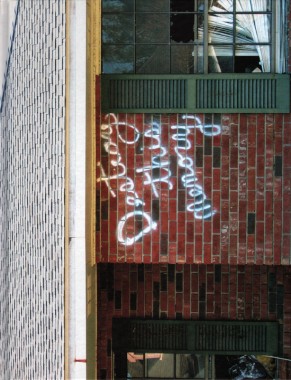
Richard Misrach, Destroy This Memory
Hardcover, 140 pp., offset 4/4, 11.75 x 15.25 inches
Edition of 2000
ISBN 978-15971116-3-8
Published by Aperture
$65.00 ·
Richard Misrach’s
Destroy This Memory is an affecting reminder of the physical and psychological impact of Hurricane Katrina. Rather than simply surveying the damage, Misrach — who has photographed the region regularly since the 1970s, most notably for his ongoing
Cancer Alley project — found himself drawn to the hurricane-inspired graffiti: messages scrawled in spray paint, crayons, chalk, or whatever materials happened to be on hand. At turns threatening, desperate, clinical, and even darkly humorous, the phrases he captured — the only text that appears in the book — offer unique and revealing human perspectives on the devastation and shock left in the wake of this disaster.
Destroy This Memory presents previously unpublished and starkly compelling material, all of which Misrach shot with his 4 MP pocket camera. Created between October and December 2005, this haunting series of images serves as a potent, unalloyed document of the raw experiences of those left to fend for themselves in the aftermath of Katrina.
Aperture, Art, Cancer Alley, Criticism, DAP, Katrina, New Orleans, Photography, Politics, Richard Misrach
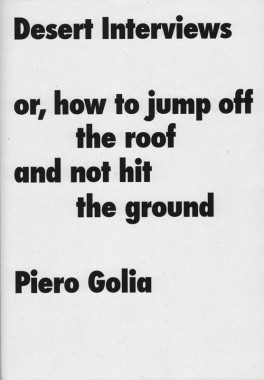
Piero Golia, Desert Interviews or, how to jump off the roof and not hit the ground
Softcover, 100 pp., offset 4/1, 148 x 210 mm
Edition of 2000
ISBN 978-3-03764-106-4
Published by JRP|Ringier
$28.00 ·
Piero Golia founded in 2005, with his long-time friend Eric Wesley, the Mountain School of Arts, an educational structure that rapidly became a new spot on the cultural map of the city of Los Angeles.
This book, composed of discussions between artists, presents a kind of report on this unique “institution:” teaching methods, academic syllabus, and students’ selection are here explained with metaphors, compared with artistic interaction, and equaled to performances. Not unlike Golia’s work itself, the development of the school and its program follow a poetic of the gesture, of the instant, and of actions recalling Fluxus, Gino de Dominicis’ or Paul McCarthy’s works.
As a career’s start, Piero Golia successfully convinced a woman to have his portrait and the words “Piero My Idol” tattooed on her back (tattoo, 2001); soon after, following an invitation to the Tirana Biennale, he rowed across the Adriatic Sea in the opposite direction to migratory movement to reach Albania (”Going to Tirana,” 2000). And, on January 14, 2005, Golia vanished from New York City leaving no documented proof of his whereabouts; he traveled from a place to another, crossing borders without a trace, for resurfacing only on the morning of February 7 at the Royal Academy of Arts in Copenhagen for a unique lecture about his adventurous trip. He now lives in Los Angeles, a place that blurs the boundaries between reality and fiction, making it the perfect setting for his exploration into the process of myth-making and his ironic outlook on contemporary society.
Andrew Berardini, Art, DAP, Education, Emilie Renard, Eric Wesley, Fluxus, Gino de Dominicis, John Armleder, JRP|Ringier, Lisa Mark, Los Angeles, Mountain School of Arts, Paul McCarthy, Piero Golia, Pierre Huyghe, Richard Jackson, Royal Academy of Arts in Copenhagen, Tirana Biennale
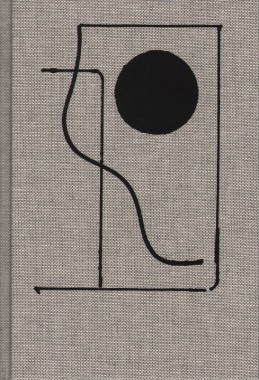
Boris Groys and Andro Wekua, Wait to Wait
Hardcover, 160 pp., offset 4/1, 135 x 196 mm
English and German
Edition of 2000
ISBN 978-3-03764-021-0
Published by JRP|Ringier, CK editions
$28.00 ·
An
unequal pair from the ranks of philosophy and contemporary art were brought to the table for debate. The celebrated Russian philosopher Boris Groys, and the young international artist from Georgia Andro Wekua, discussed their shared experiences in the Soviet system, the conditions governing production in contemporary art today, and the sensitivities of a generation of artists born in the 1970s, taking Wekua’s two large installations
Wait to Wait and
Get Out of My Room as examples.
Phenomena such as loneliness, doubles, repetitions, mirror images, and waiting are the central themes of this conversation, illustrated by pictures of the two installations and several collages by Wekua.
Andro Wekua, Art, Boris Groys, Christoph Keller, CK editions, Criticism, DAP, Galerie Peter Kilchmann, Gladstone Gallery, Interviews, JRP|Ringier, Philosophy, Theory













